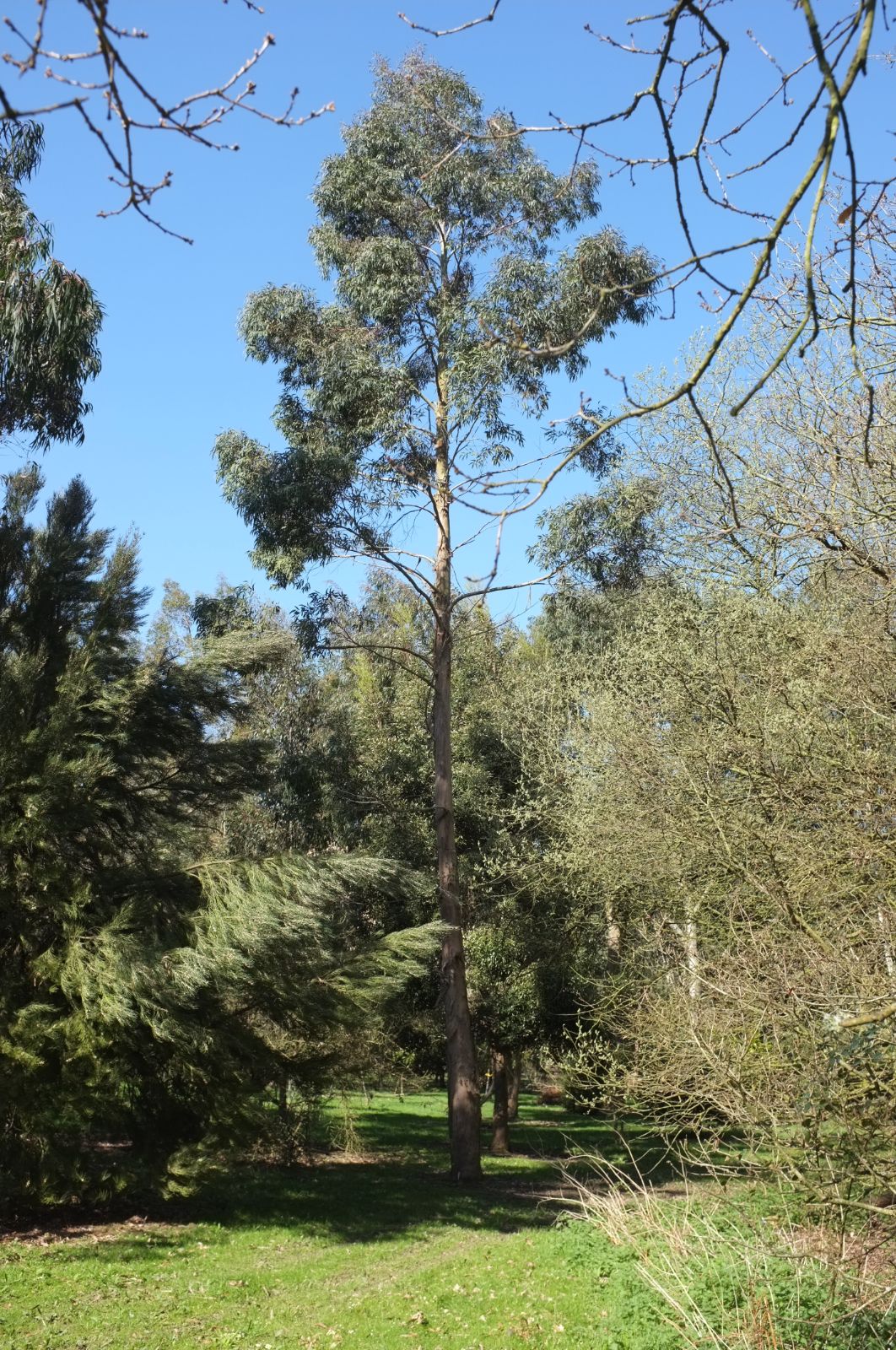Eucalyptus elliptica
Credits
Article from New Trees by John Grimshaw & Ross Bayton
Recommended citation
'Eucalyptus elliptica' from the website Trees and Shrubs Online (treesandshrubsonline.
Genus
Common Names
- Bendemeer White Gum
- Brittle Gum
Synonyms
- E. mannifera subsp. elliptica (Blakely & McKie) L.A.S. Johnson
Other taxa in genus
- Eucalyptus acaciiformis
- Eucalyptus albida
- Eucalyptus amygdalina
- Eucalyptus archeri
- Eucalyptus blakelyi
- Eucalyptus bridgesiana
- Eucalyptus brookeriana
- Eucalyptus camaldulensis
- Eucalyptus camphora
- Eucalyptus chapmaniana
- Eucalyptus cinerea
- Eucalyptus coccifera
- Eucalyptus cordata
- Eucalyptus crenulata
- Eucalyptus cypellocarpa
- Eucalyptus dalrympleana
- Eucalyptus delegatensis
- Eucalyptus fastigata
- Eucalyptus fraxinoides
- Eucalyptus globulus
- Eucalyptus gregsoniana
- Eucalyptus gunnii
- Eucalyptus johnstonii
- Eucalyptus kybeanensis
- Eucalyptus lacrimans
- Eucalyptus laophila
- Eucalyptus leucoxylon
- Eucalyptus macarthurii
- Eucalyptus macrorhyncha
- Eucalyptus mannifera
- Eucalyptus melliodora
- Eucalyptus mitchelliana
- Eucalyptus moorei
- Eucalyptus morrisbyi
- Eucalyptus neglecta
- Eucalyptus nicholii
- Eucalyptus nitens
- Eucalyptus nova-anglica
- Eucalyptus obliqua
- Eucalyptus oreades
- Eucalyptus ovata
- Eucalyptus parvula
- Eucalyptus pauciflora
- Eucalyptus praecox
- Eucalyptus radiata
- Eucalyptus regnans
- Eucalyptus remota
- Eucalyptus risdonii
- Eucalyptus rodwayi
- Eucalyptus rubida
- Eucalyptus saligna
- Eucalyptus sideroxylon
- Eucalyptus stellulata
- Eucalyptus subcrenulata
- Eucalyptus tenuiramis
- Eucalyptus urnigera
- Eucalyptus viminalis
Tree to 20 m. Bark white, grey or yellow, powdery, smooth throughout. Branchlets green. Juvenile leaves opposite, glaucous, orbicular, ovate or broadly lanceolate, sessile. Adult leaves alternate, dull green, 15–25 × 1.5–3 cm, lanceolate, lateral veins distinct, margins entire, apex acute, falcate or not; petiole flattened or channelled, 1–3.6 cm long. Inflorescences axillary and solitary; umbellasters with seven flowers. Flower buds ovoid; hypanthium hemispherical to subglobose, 0.3–0.5 cm wide; stamens white or cream. Capsule ovoid, 0.5–0.8 cm diameter; valves three to four, exserted. Chippendale 1988, Hill 2004. Distribution AUSTRALIA: New South Wales, Queensland. Habitat Wet forest on deep, fertile soils. USDA Hardiness Zone 8. Conservation status Not evaluated. Taxonomic note See E. mannifera.
As might be expected given its close relationship with the variable Eucalyptus mannifera, E. elliptica is similarly variable, in appearance and also in its horticultural success. The best forms are both very hardy and very bluish or silvery: one such form is grown at Cistus Nursery in Oregon, from seeds collected at 860 m near Uralla in New South Wales at a site where –15 ºC has been recorded. These plants have achieved 5 m in three and a half years, but also in Oregon there are trees of about 30 years old that are now 15 m tall (S. Hogan, pers. comm. 2007), so it would not seem to maintain an explosive growth rate for long. It has not been extensively tried in the United Kingdom but the view of the Gum Group (2007) is that it is not a fussy species and is of reasonable hardiness, although the highest provenances should be sought. A 7 m tree at Cookscroft, Earnley, West Sussex in 1997 is the tallest recorded by TROBI, and a similarly sized specimen grows in Geoff Cooper’s wood near Witney, Oxfordshire, on rather damp clay soil. The species is prone to wind rock there (G. Cooper, pers. comm. 2007), but has not suffered frost damage. The bark can be among the whitest of all gums, and the whole tree has a slightly pendulous appearance caused by the large and rather heavy leaves.

